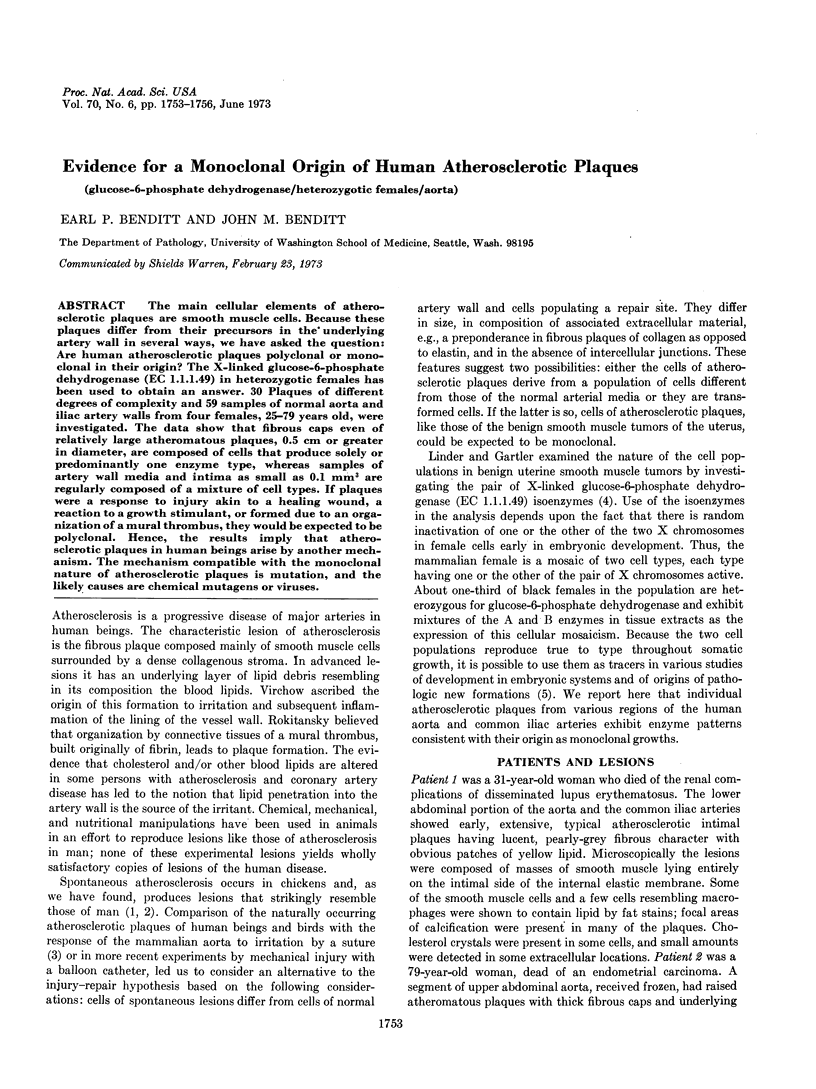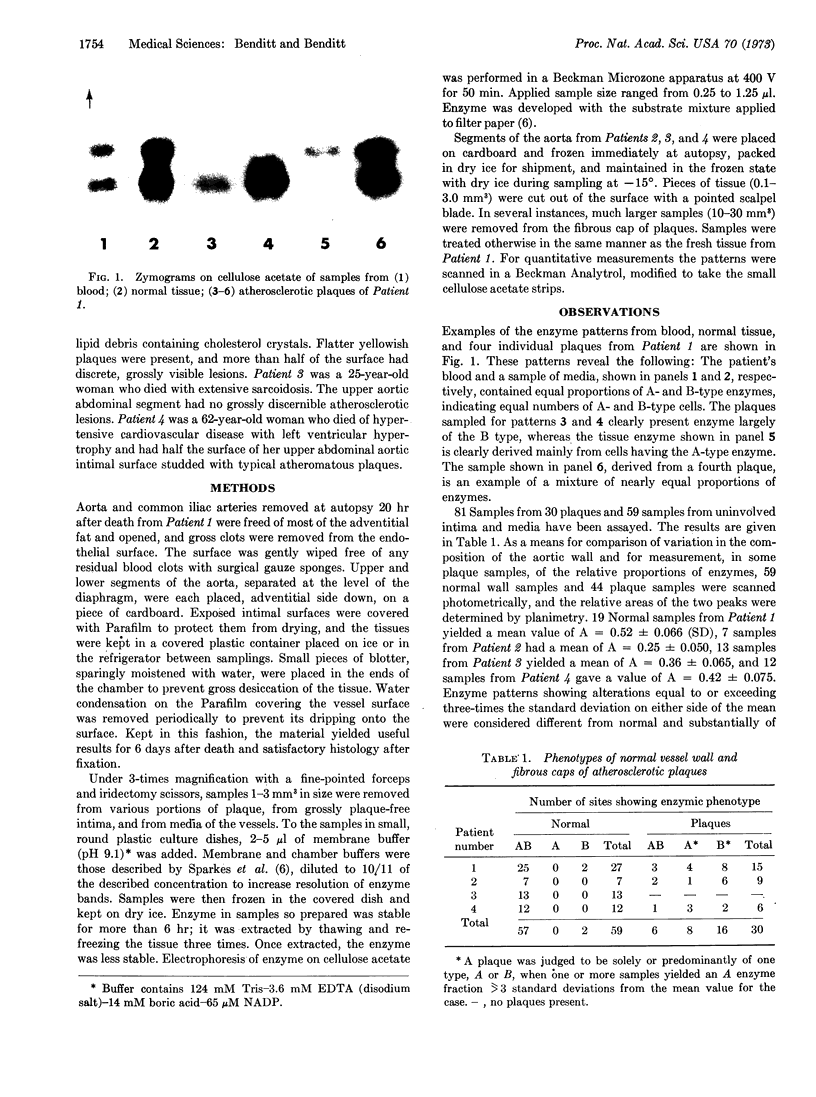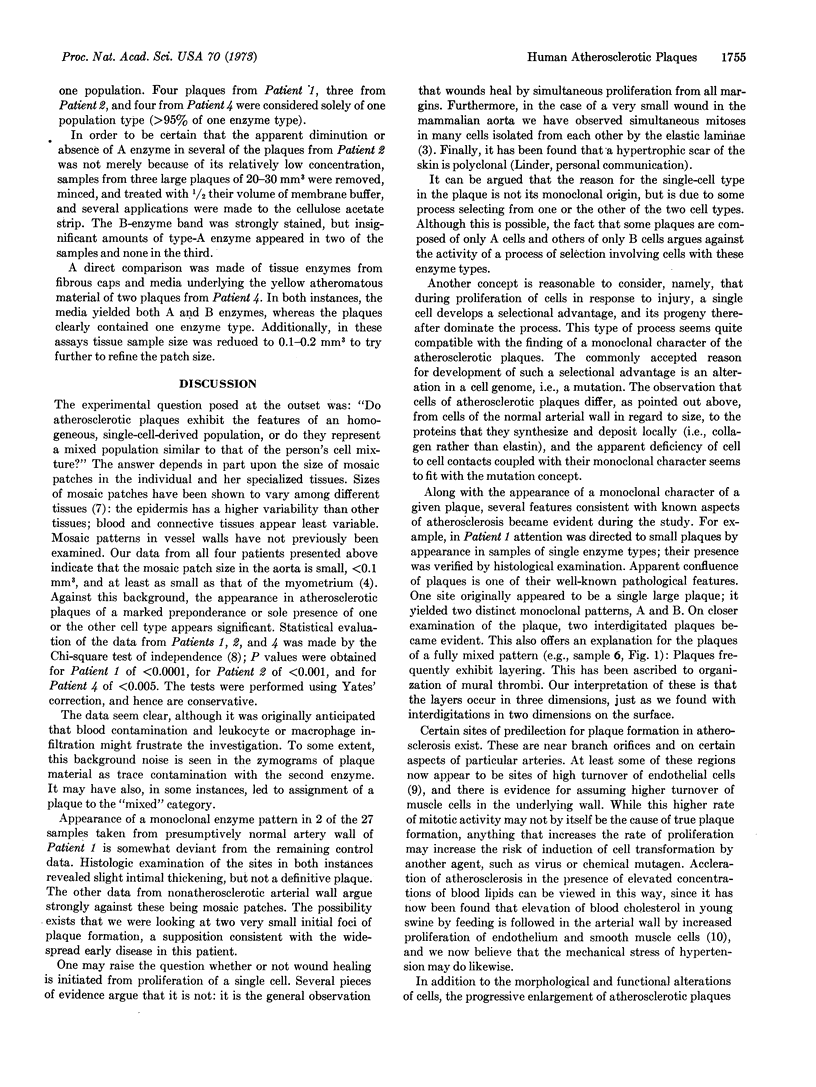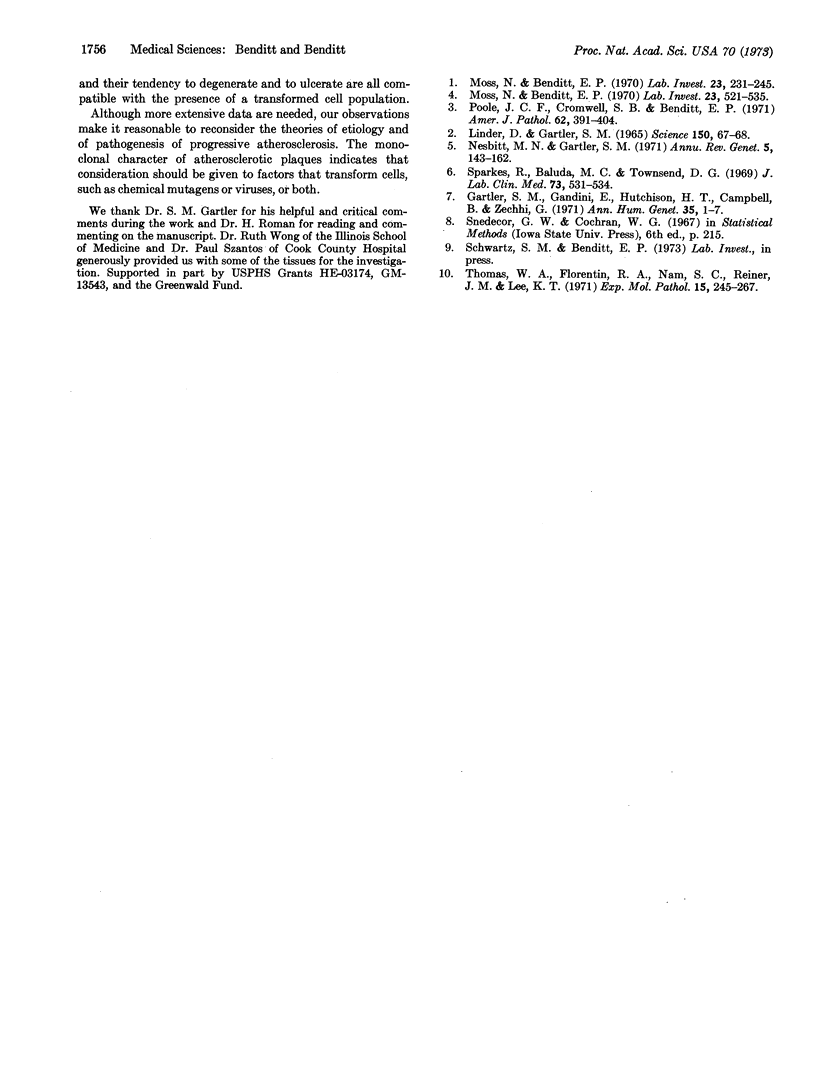Abstract
The main cellular elements of atherosclerotic plaques are smooth muscle cells. Because these plaques differ from their precursors in the underlying artery wall in several ways, we have asked the question: Are human atherosclerotic plaques polyclonal or monoclonal in their origin? The X-linked glucose-6-phosphate dehydrogenase (EC 1.1.1.49) in heterozygotic females has been used to obtain an answer. 30 Plaques of different degrees of complexity and 59 samples of normal aorta and iliac artery walls from four females, 25-79 years old, were investigated. The data show that fibrous caps even of relatively large atheromatous plaques, 0.5 cm or greater in diameter, are composed of cells that produce solely or predominantly one enzyme type, whereas samples of artery wall media and intima as small as 0.1 mm3 are regularly composed of a mixture of cell types. If plaques were a response to injury akin to a healing wound, a reaction to a growth stimulant, or formed due to an organization of a mural thrombus, they would be expected to be polyclonal. Hence, the results imply that atherosclerotic plaques in human beings arise by another mechanism. The mechanism compatible with the monoclonal nature of atherosclerotic plaques is mutation, and the likely causes are chemical mutagens or viruses.
Keywords: glucose-6-phosphate dehydrogenase, heterozygotic females, aorta
Full text
PDF



Images in this article
Selected References
These references are in PubMed. This may not be the complete list of references from this article.
- Gartler S. M., Gansini E., Hutchison H. T., Campbell B., Zechhi G. Glucose-6-phosphate dehydrogenase mosaicism: ito;ozatopm om tje study of hair follicle variegation. Ann Hum Genet. 1971 Jul;35(1):1–7. [PubMed] [Google Scholar]
- Linder D., Gartler S. M. Glucose-6-phosphate dehydrogenase mosaicism: utilization as a cell marker in the study of leiomyomas. Science. 1965 Oct 1;150(3692):67–69. doi: 10.1126/science.150.3692.67. [DOI] [PubMed] [Google Scholar]
- Moss N. S., Benditt E. P. The ultrastructure of spontaneous and experimentally induced arterial lesions. 3. The cholesterol-induced lesions and the effect of a cholesterol and oil diet on the preexisting spontaneous plaque in the chicken aorta. Lab Invest. 1970 Nov;23(5):521–535. [PubMed] [Google Scholar]
- Moss N. S., Benditt E. P. The ultrastructure of spontaneous and experimentally induced arterial lesions. II. The spontaneous plaque in the chicken. Lab Invest. 1970 Sep;23(3):231–245. [PubMed] [Google Scholar]
- Nesbitt M. N., Gartler S. M. The applications of genetic mosaicism to developmental problems. Annu Rev Genet. 1971;5:143–162. doi: 10.1146/annurev.ge.05.120171.001043. [DOI] [PubMed] [Google Scholar]
- Poole J. C., Cromwell S. B., Benditt E. P. Behavior of smooth muscle cells and formation of extracellular structures in the reaction of arterial walls to injury. Am J Pathol. 1971 Mar;62(3):391–414. [PMC free article] [PubMed] [Google Scholar]
- Sparkes R. S., Baluda M. C., Townsend D. E. Cellulose acetate electrophoresis of human glucose-6-phosphate dehydrogenase. J Lab Clin Med. 1969 Mar;73(3):531–534. [PubMed] [Google Scholar]
- Thomas W. A., Florentin R. A., Nam S. C., Reiner J. M., Lee K. T. Alterations in population dynamics of arterial smooth muscle cells during atherogenesis. I. Activation of interphase cells in cholesterol-fed swine prior to gross atherosclerosis demonstrated by "postpulse-salvage labeling". Exp Mol Pathol. 1971 Oct;15(2):245–267. doi: 10.1016/0014-4800(71)90103-1. [DOI] [PubMed] [Google Scholar]



